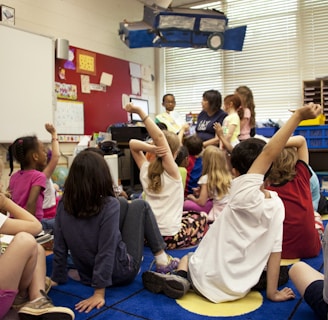Should Schools Teach Kids About Death? A Critical Look at Death Education
Exploring the debate on whether death and grief should be part of school curriculums and how it could impact young minds.
9/21/20243 min read


Should Schools Teach Kids About Death?
The question of whether schools should teach kids about death has sparked debate worldwide. Advocates, including parents and doctors, believe that integrating death and grief into the school curriculum could offer essential emotional tools for children. However, educators express hesitation, as implementing such a shift comes with many challenges.
In this blog, we’ll explore the importance of death education, the potential impact on students, and how it could be integrated into existing curricula.
The Importance of Death Education
Education about death can empower young people with emotional resilience and a deeper understanding of life’s realities. Our society often avoids discussions around death, leading to anxiety, insecurity, and misunderstandings about its inevitability. By addressing death in schools, we can promote empathy, compassion, and preparedness, while reducing fear and uncertainty—not only about death but about life itself.
Many of us have experienced loss during our school years, whether it was a classmate, family member, or teacher. However, few schools provide any structured support or education around such events, leaving students to grapple with their questions alone. This neglect can perpetuate a cycle of denial and avoidance.
Should Schools Take Responsibility?
Ideally, parents should be the ones teaching children about death. Much like topics such as respect, consent, and life skills, conversations about death belong in the home. However, the reality is that many parents avoid the subject, leaving schools to fill the gap.
In practice, death education could help raise a generation that is more comfortable with the idea of mortality and better equipped to handle loss. Schools play a vital role in fostering this acceptance, especially if it prepares young people to educate their future children on the subject.
How to Implement Death Education in Schools
Integrating death education into school curricula is no small feat. In countries like Australia, where the school system already faces overcrowded schedules, finding room for additional topics is challenging. However, there are creative ways to include death-related discussions within existing subjects like Science, Humanities, Health, and Religious Education.
In History, for example, educators could explore how events like World War II shaped our modern funeral practices and healthcare systems. In Religious Studies, schools can discuss differing views on death, including perspectives on voluntary assisted dying (VAD) and the ethical dilemmas surrounding it. These approaches engage students in critical thinking while normalizing conversations about death.
How Other Countries Approach Death Education
While death education remains rare in most countries, Taiwan stands out for incorporating it into the mainstream curriculum since 2000. After a rise in suicides and a deadly earthquake in 1999, Taiwan introduced "Life Education," teaching students about death and its impact on the living. This program aims to counter the death-avoidant culture that pervades Taiwanese society.
Countries like Canada, the UK, and Japan touch on death in their schools but lack a standardized curriculum. Australia, often waiting for international precedents, has yet to fully embrace death education, but discussions are ongoing.
Do Boys and Girls Need to Learn About Death Differently?
An interesting question arose during a recent death education workshop: should boys and girls be taught about death differently? While there are gender-specific issues surrounding death, such as the medical reluctance seen in many men, these conversations may not need to be separate in the school setting. Instead, schools could address topics like toxic masculinity and gender roles as part of a broader life education curriculum to help students of all genders develop healthier habits and perspectives.
The Challenges of Death Education in Schools
Time and fear are the two biggest obstacles to implementing death education in schools. Teachers are already stretched thin with packed schedules, and death remains a taboo subject for many parents. Schools fear backlash from parents who don’t want their children exposed to these discussions.
Death education, however, need not be confrontational. By sticking to facts about the physical aspects of death and avoiding religious angles, schools can create a more neutral space for learning. Educators can focus on helping students understand death in a way that complements their personal or family beliefs.
Watch Our Full Video
Want to dive deeper into this debate? Watch our full video for more insights into death education and how it could shape future generations.
Conclusion
Death education in schools offers both pros and cons. It can help normalize an inevitable part of life while preparing students to face loss with more empathy and resilience. Schools can customize workshops to fit their unique needs, ensuring they cater to various religious, cultural, and socioeconomic groups. However, implementing these programs requires careful thought, planning, and collaboration between schools and families.
Are you interested in bringing death education to your school or organization? Our consultations are tailored to fit your needs. Book a consultation now to learn how we can help.



